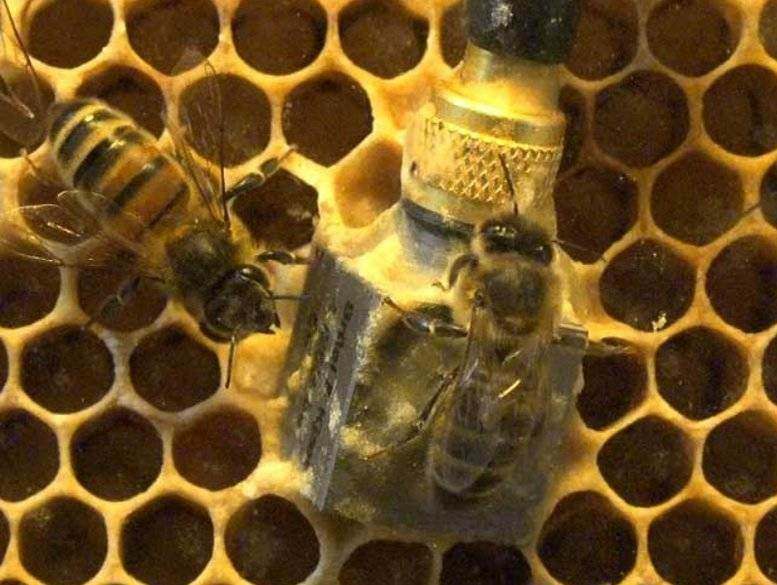NORTH SOMERSET BEEKEEPERS
Martin then played acoustic recordings from three different activities: Queen piping, an alarm reaction termed "whooping", and the classic von Frisch waggle dance.
By simultaneously recording with a high frame-rate camera it was possible to identify individual bees responsible for the higher frequency (340Hz) whooping alert. The normal 250Hz wing movement is constrained by air drag, so to achieve 340Hz the bees use a rotational wing movement in place of the usual flapping. Two dimensional frequency plots highlighted the vibrational changes. Honey bees appear to communicate more through substrate vibration than acoustic air waves. Indeed, they may not have any "ears" at all. They react by freezing all activity when subjected to higher energy vibrations. This was compared to the anecdotal accounts of beekeepers singing to calm their hives and beating saucepans ("tanging") to force flying swarms down to earth. The prediction of imminent swarming was also an aim of this research. The indicators from vibrational data required an extended analysis over a period of time for this to be of practical value to beekeepers. The talk was universally acknowledged to be fascinating and has stimulated several members to kit up and try their hands at vibrational analysis! The talk and discussion can still be seen using the following URL with an entry passcode: vDWH8&9M. https://us02web.zoom.us/rec/share/qXcG_sUzDppOG-NXON2pnxGwzYqpO0AC_KJ7cbsWSCRNVO9GcDRIC9OkJ16mL9u6.vx_53KpjbTdykkO3
0 Comments
Leave a Reply. |
